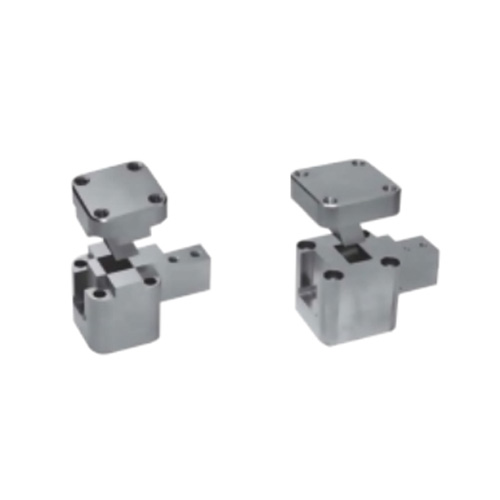Email: [email protected]
Enhancing Wear Resistance and Durability of Side Core Pulling Systems in High-Strength Fiber-Reinforced Plastic Injection Molding
Side Core Pulling mechanisms are critical components in the injection molding of complex plastic parts, especially those made from high-strength glass-fiber reinforced plastics. Ensuring the longevity and reliability of any Side Core Pulling system is essential to maintain mold quality, reduce maintenance frequency, and support high-volume production. This article explores proven strategies to enhance the wear resistance and service life of Side Core Pulling units, particularly for applications involving abrasive, high-strength materials.
Challenges of Side Core Pulling with Glass-Fiber Reinforced Plastics
When molding parts using glass-fiber-reinforced plastics, the abrasive nature of the fiber particles accelerates wear on the moving elements of the Side Core Pulling mechanism. The Side Core Pulling sliders and steel pins are directly exposed to friction against the mold cavity and core surfaces. Over time, this abrasion can cause surface scratches, seizure, or dimensional degradation, which compromises part quality and increases downtime.
Strategy 1: Use of Wear-Resistant Inserts
One effective solution is incorporating wear-resistant inserts in the Side Core Pulling assembly. Hardened steel or carbide inserts installed in the side core block and slider bearing surfaces protect the core elements from direct abrasive contact. These inserts can be individually replaced when worn, extending the service life of the entire Side Core Pulling system without requiring full replacement.
For example, a Tier-1 automotive supplier producing instrument panel components upgraded their mold design to include tungsten carbide inserts at the contact surfaces of the Side Core Pulling sliders. As a result, mold maintenance intervals doubled, and mold downtime was cut by over 40%, even after molding hundreds of thousands of parts in long glass-fiber reinforced thermoplastics.
Strategy 2: Application of Hard Coatings (TiN, DLC)
Another advanced approach involves applying hard surface coatings such as Titanium Nitride (TiN) or Diamond-Like Carbon (DLC) to critical Side Core Pulling components. These coatings significantly increase surface hardness, enhance friction resistance, and reduce galling and scoring.
In a recent project for a precision medical component made from high-strength PET-GF reinforced plastic, the mold manufacturer applied a DLC coating to the Side Core Pulling pins and slider surfaces. After over one million cycles, the Side Core Pulling assembly showed minimal wear and maintained full functional precision. The DLC coating allowed the Side Core Pulling system to continue operations without lubricant reapplication, benefiting cleanroom manufacturing environments.
Strategy 3: Integration of Self-Lubricating Materials
Implementing self-lubricating materials in Side Core Pulling guides and bearing surfaces provides another layer of protection. Polymers such as PTFE composites or graphite-filled engineered plastics can reduce friction without external lubrication.

A consumer electronics moldmaker installed self-lubricating bushings in Side Core Pulling guide components used for molding reinforced PSU housing parts. These bushings lowered friction by more than 50% compared to steel-on-steel contact. The Side Core Pulling sliders operated more smoothly, reduced cycle time variance, and maintained accurate part ejection throughout extended production runs.
Case Study: Industrial Appliance Parts
In the industrial appliance sector, a manufacturer molding side panels with glass-fiber-reinforced Nylon 66 utilized a composite strategy that combined all three enhancements in the Side Core Pulling system. Tungsten carbide inserts lined the slider contact areas, key components were coated with TiN, and guide slots incorporated self-lubricating polymer inserts.
This multi-layer strategy extended Side Core Pulling life to over 1.5 million cycles without adjustment. The downtime for mold maintenance decreased by two-thirds, and the scrap rate due to mold misalignment or wear dropped to under 0.2%.
Aligning with High-Strength GF Plastic Injection Requirements
Today’s injection molding environments increasingly involve the use of high-strength glass-fiber-reinforced plastics for structural parts in automotive, electronics, and industrial domains. Side Core Pulling components must endure abrasive loading, high temperature, and cyclic mechanical stress. The use of wear-resistant inserts, hard coatings such as TiN or DLC, and self-lubricating materials ensures that Side Core Pulling systems can meet these challenges.
Best Practices for Side Core Pulling Enhancement
Design for modularity: Enable easy replacement of inserts and coated components in the Side Core Pulling module.
Select appropriate materials: Choose carbide or high-hardness plating (TiN, DLC) based on expected wear intensity.
Evaluate lubrication needs: Use self-lubricating components in Side Core Pulling guide zones for low-maintenance setups.
Monitor the Validate Side Core. Pulling performance through long-run testing in actual application materials.
Document maintenance plans: Accurately plan spare part inventory and predictable wear changes for Side Core Pulling parts.
Improving the wear resistance and lifespan of Side Core Pulling mechanisms through hardened inserts, advanced coatings, and self-lubricating materials is no longer optional—it is fundamental to modern mold design for glass-fiber reinforced plastics. By adopting these strategies, mold makers can ensure Side Core Pulling systems deliver long-term reliability, reduce downtime, and align with industry expectations for high-quality production.
Get in touch
Related recommendations
